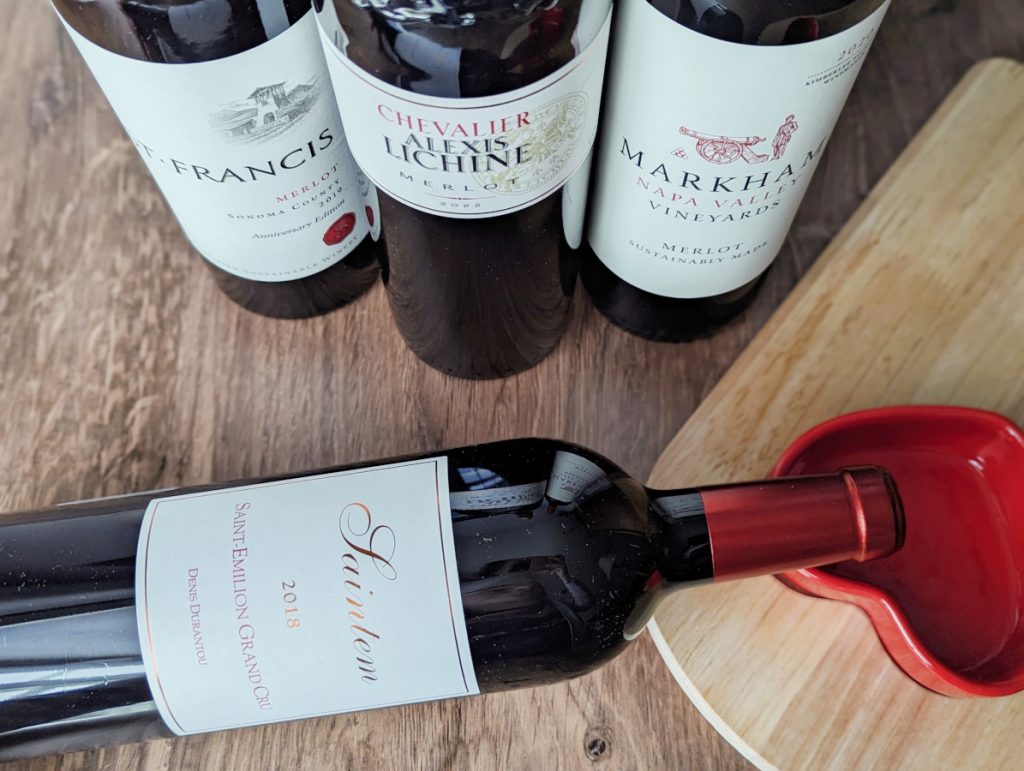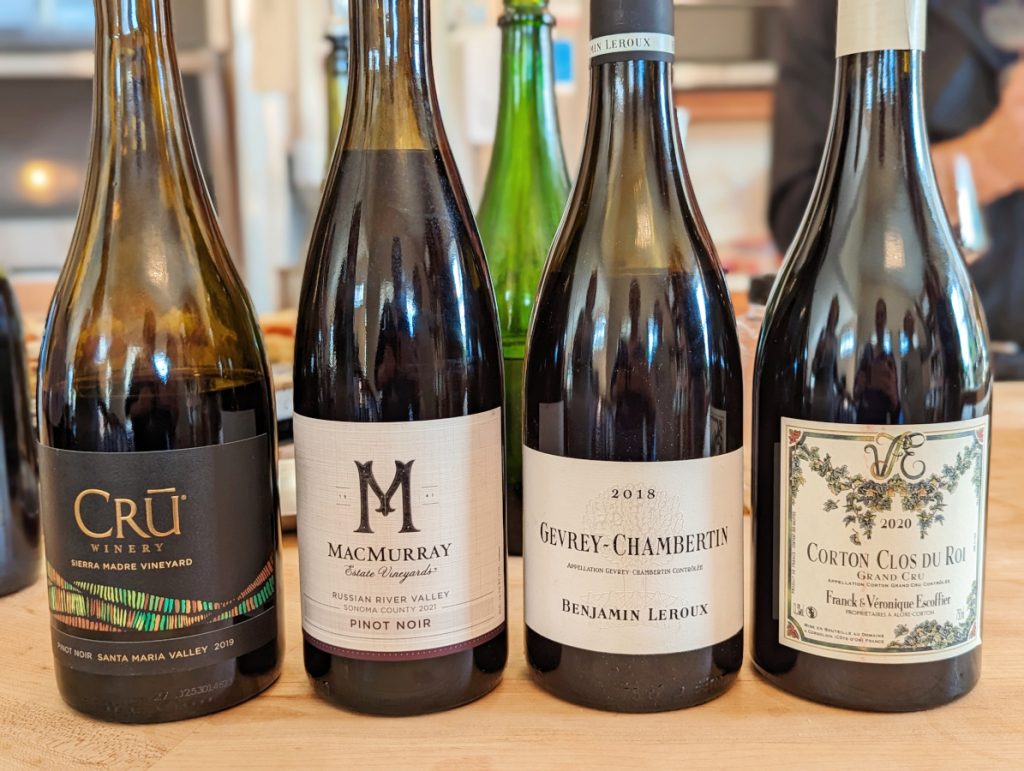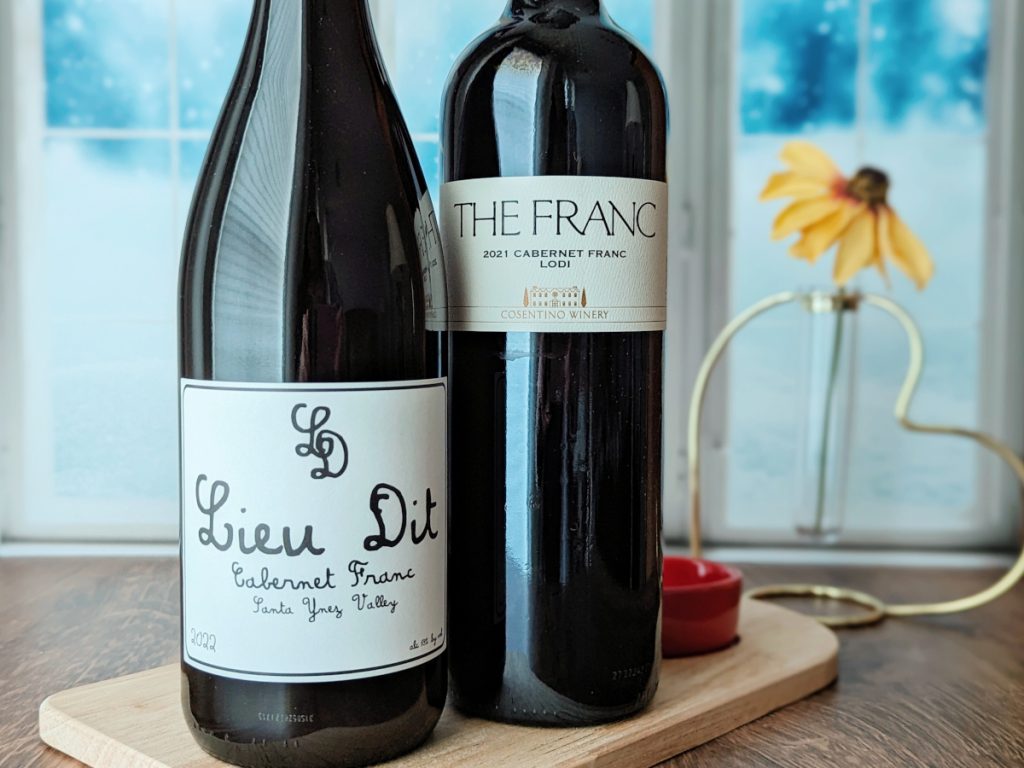Red Wine Edition

Photo by: Denise M. Gardner
Do you know your favorite red wine grape variety?
Or do you tend to stay clear of all red wines, worried you’ll never find one you like?
Or maybe you’re a prominent red wine drinker who routinely goes back to the same variety time after time. The thought of exploring something new seems daunting, especially if you feel unsure you’ll enjoy it.
The truth is, with a little bit of tasting among 5 red wine grape varieties, that I’ve nicknamed “The Classics,” you can become quite familiar with your likes/dislikes associated with red wines quickly. The 5 Classics each represent one of the 5 “Red Wine Taste Categories” that I’ve coined as:
- Fruity, Light Reds
- Neutral, Light-Medium [Bodied] Reds
- Concentrated, Fruity Reds
- Oaky Reds
- Big, Bold, Makes-Your-Mouth-Dry Reds
These Taste Categories generalize the 5 different ways most red wines taste.
It’s important to note a few things. First, yes, sometimes a wine grape variety can cross over into different Taste Categories. Second, each Taste Category contains both “New World” and “Old World” examples. New World and Old World wine styles are like sub-groupings within the Taste Categories. Thus, there is a spectrum of flavor and mouthfeel profiles within each red wine Taste Category. And, finally, it is possible for one wine to get categorized into more than one of the above 5 wine Taste Categories. This is because our tasting capabilities and interpretations are unique to our individual self and can vary slightly from someone else’s taste interpretations.
Nonetheless, determining which “Classic” (or “Classics”) you enjoy can help you identify which red wine Taste Category you prefer. Once you discover your red Taste Category preferences, I can lead you to your next wine selection that you will likely enjoy! And don’t worry if you simply prefer white wines. I have a list of The Classics for white wines, as well, coming later this year!
Grape Variety or Grape Growing Region?
In the U.S., we tend to focus on wine grape varieties when it comes to wine. This can make it confusing when we try to find alternative wines from other countries like France, Italy, or Spain. In contrast to the U.S., these countries often label wines by the grape growing region in which the wine grapes were grown and produced into wine. However, often, these 5 varieties are grown internationally in many additional countries outside of the U.S.
Thus, I’m going to help you find your preferences based on The Red Classics. Once you identify the variety and style (Old World vs. New World), I can help you search for additional wines outside of your comfort zone from a variety or regional perspective, but within your preferred Taste Category! (More tips on this in a future Sip & Swirl!)
Need to review the difference between New World and Old World red wines? No problem! Check out this Sip & Swirl from March 2023.
Let’s take a look at a few of “The Classic” red wine grape varieties to help you discern what you like, and whether you favor that variety in the Old or New World wine style.
The Classics: Red Wines

Photo by: Denise M. Gardner
Pinot Noir (Taste Category: Light, Fruity Reds)
I’m starting with Pinot Noir simply because it tends to be the lightest bodied and least tannic of the following wine grape varieties. Pinot Noir has some unique flavors. New World Pinot Noir (from states like California, Washington, or Oregon) typically focuses on red raspberry jam, fresh strawberries, ripe plum, nutmeg spice, black licorice, juniper leaf, floral (violets, hibiscus) and woody flavors. Old World Pinot Noir (from regions like Burgundy, France or even parts of the Eastern U.S.) tend to have flavors that remind us of red cherries, cranberries, fresh plums, fresh earth/forest floor, woody, mushroom, and floral flavors. Pinot Noir from Old World regions tends to have higher levels of acidity (i.e., more sourness) and lower concentrations of alcohol (~12%).
New World Style Pinot Noirs
(*Author’s Note* There will be some taste and flavor differences between Pinot Noir from Oregon vs. Washington/California due to regional variation, terroir, and its influences on the wine flavor):
- Flowers Sonoma Coast Pinot Noir
- Gary Farrell Russian River Valley Pinot Noir
- Crū Winery Sierra Madre Vineyard Pinot Noir
- Schug Sonoma Coast Pinot Noir
- A to Z Pinot Noir (Oregon)
- Domaine Drouhin Oregon Pinot Noir (Oregon)
Old World Style Pinot Noirs
- Benjamin Leroux Gevrey-Chambertin
- Frank & Véronique Escoffier Corton Clos du Roi Grand Cru
- Joseph Drouhin Gevrey-Chambertin
Merlot (Taste Category: Neutral, Light-Medium [Bodied] Reds)

Photo by: Denise M. Gardner
Merlot, depending on where it is grown, provides a wide spectrum of viscosity (roundness in the mouth), tannic (astringent) mouthfeel, and flavors. In some New World regions (like California or Washington), the tannic strength of Merlot can be quite significant and feels quite drying on the palate. These wines are often coupled with flavors of ripe plums, fresh blackberry, bay leaf or savory herbs, chocolate/cocoa, and are regularly supplemented with a vanilla flavor from oak aging. In contrast, Old World style Merlots (from regions within France or the Eastern/Midwestern U.S.) have a more savory flavor. These wines often carry red cherry, fresh blackberry or black currant, Balsamic, crushed tomato, and thyme or savory herbs flavors.
New World Style Merlots
- St. Francis Merlot (New World Style, International Style)
- Provenance Vineyards Merlot
- Raymond R Collection Merlot (New World Style, International Style)
- Markham Vineyards Merlot
Old World Style Merlots
- Chateau Saint-André Corbin St.-Georges-St.-Emilion
- Chateau Saintayme Saint-Emilion Grand Cru
- Chevalier Alexis Lichine Merlot
- Candenza Vineyards 2021 Bridge

Photo by: Denise M. Gardner
Cabernet Franc (Taste Category: Oaky Reds)
One of the parents to Cabernet Sauvignon, Cabernet Franc is often overlooked as a variety. However, this grape variety can be used to make a diverse range of red wine styles. Thus, if you don’t like Cabernet Franc from one region, it does not guarantee you won’t like it from another region. From the New World regions, or warmer climate regions, Cabernet Franc is often floral with strong violet flower essences, boasting of dark, black cherries, fresh slate, dried leaves, or pencil shavings. In an Old World style (especially from regions like Chinon, France), the variety has a stronger red cherry flavor coupled with fresh strawberry, dried tobacco, pencil shavings, and cured meats or savory elements. Sometimes, a hint of green bell pepper flavor is noted in Cabernet Franc, which is characteristic for this variety. From cooler climate regions, Cabernet Franc’s tannins are substantial but often more subtle compared to Cabernet Sauvignon. The combination of nuanced flavors and mouthfeel elements make Cabernet Franc a valuable food-pairing wine.
New World Style Cabernet Francs
- The Franc by Cosentino Winery (New World Style, International Style)
- Lieu Dit Cabernet Franc
Old World Style Cabernet Francs
- Stokelan Estate Kirby’s Mill (Blend)
- Stokelan Estate Simla (Blend)
- Laroque Cité de Carcassonne Cabernet Franc
- Galer Estate Cabernet Franc
Cabernet Sauvignon (Taste Category: Big, Bold, Makes-Your-Mouth-Dry Reds)

Photo by: Denise M. Gardner
I’ve previously talked about the obsession with Cabernet Sauvignon (Sip & Swirl September 2021) because it does tend to be a heavily sought after variety. However, if you find yourself not liking Cabernet Sauvignon, I’d encourage you some wines from some of these other varieties. The prestige associated with Cabernet Sauvignon is significant, but it really only captures a few styles and flavor profiles of red wine.
In the New World Cabernet Sauvignons (like those from California), expect jammier red raspberry or red currant flavors, fresh blueberry, floral (violets), black licorice/anise, olive, and herbs and spice flavors like fresh mint, sage, or eucalyptus. When aged in oak, it’s very possible to find these wines supplemented with vanilla, chocolate/cocoa/mocha, roasted coffee, and toasted marshmallow flavors. Many California ~$20 Cabernet Sauvignons also come with a hint of sweetness to soften the tannic mouthfeel in the finish of the wine. In contrast, Old World Cabernet Sauvignon has a much different flavor profile emphasizing the bramble character of red currants or red raspberries, fresh plums, cedar wood, dried tobacco, mint or sage herbal characters, olive, and green bell pepper. Oak can also contribute to these Old World style wines, but the oak characters tend to be more subtle with gentle toasted oak, roasted coffee, leather, and spice attributes that contribute to the Cabernet Sauvignon flavor profile.
New World Style Cabernet Sauvignons
- Vasse Felix Filius Cabernet Sauvignon
- J. Moss Napa Valley Cabernet Sauvignon
- Buena Vista Napa Valley Cabernet Sauvignon
- Frog’s Leap Rutherford Napa Valley Cabernet Sauvignon
- Josh Reserve Cabernet Sauvignon (New World Style, International Style)
- Caymus Vineyards Napa Valley Cabernet Sauvignon (New World Style, International Style)
Old World Style Cabernet Sauvignons
- Chateau Haut Gaudin Bordeaux Superior
- Château Belgrave Haut-Médoc
- Château Les Gravettes Brodeaux Superior
Zinfandel (Taste Category: Concentrated, Fruity Reds)

Photo by: Denise M. Gardner
Concentrated, Fruity Reds tend to lack the noticeable drying character that is often associated with high levels of astringency caused by a strong presence of tannin. Cabernet Franc and Cabernet Sauvignon generally have more noticeable astringency than the wines listed in this category.
The chances are that if you like Zinfandel, then you’ll likely enjoy all of the varieties listed above in a New World style. That is because many of the varieties listed above are often ripened to a point that mimic the natural aromatic flavor profile of California grown and produced Zinfandel. Zinfandel is fruity in its flavor profile: dark raspberry, blackberry, blueberry, strawberry jam, cinnamon, and nutmeg spice flavors. Sometimes, the wines can take on elements of Hoisin sauce flavors. When aged in American oak, the wines also take on a strong vanilla character. In contrast, Primitivo is Italian Zinfandel acts as an example of Old World Zinfandel. In many ways, Primitivo wines taste similar to Zinfandels produced in the U.S., though with slightly more balance: more notable acidity, lower alcohol, and “toned down” versions of the Zinfandel flavor characters.
New World Style Zinfandels
Old World Style Primitivos

